The skies were dark and there was a slight drizzle just outside the Mall of Asia Arena in Pasay City on Wednesday afternoon. Fans milled around the venue – some looking for extra tickets, others waiting for their companions, even others just waiting until game time. Scalpers were also a dime and a dozen – asking fans for extra tickets they could buy and sell at prices at least three times the original amount.
It was Game 3 of the 2022 PBA Commissioner’s Cup Finals featuring the country’s most popular ballclub, Barangay Ginebra San Miguel, tangling with the visiting foreign team, the Bay Area Dragons of Hong Kong.
Any bonafide PBA follower would attest that the scene at the MOA Arena is a common sight in every Ginebra game, particularly during the finals. The first time this writer came across a similar scenario, it was way back in 1986 featuring the Robert Jaworski-mentored Gins, featuring the combo of Billy Ray Bates and Michael Hackett, going up against Formula Shell at the old ULTRA (now PhilSports Arena) in Pasig City.
Fans had already entered the MOA Arena as early as 5:00PM, yet, there were still long queues at the entrance of both the Coral and Marina ways. Fortunately, venue security was able to manage the lines well, especially given that the rain forced the people to cram themselves within the roofed spaces.
Birth of Ginebra’s never-say-die
Just to clarify, never-say-die was not a term invented specifically for Ginebra. The phrase has been there a long time, often used by broadcasters, particularly Dick Ildefonso and Emy Arcilla, when describing an effort from one team to come back from the grave when everything seemed lost. Whether it was a championship contender like Crispa or Toyota, or an also-ran team like Mariwasa-Honda or Countryfair, never-say-die was used loosely for any team that gave their all to come back from a huge lead and get a shot in winning a game.
We all know though what happened on October 22, 1985, the game at the ULTRA that saw Jaworski coming back in the game in the third quarter after getting bloodied in the lips from a wayward Jeff Moore elbow in the second quarter. With nine stitches, the Big J resurrected his underdog Ginebra team to the delight of a roaring crowd, ultimately winning the game, 99-96.
From there on, Ginebra established a reputation for starting slow and falling behind by double digits only to claw back and win the game against any opponent. Never-say-die suddenly found itself being an exclusive domain for one team – with likely patent ownership at that. While Jaworski’s never-say-die attitude has been evident since the 1960s when he was a UAAP superstar for the multi-titled UE Red Warriors, it was how he infected his players to embrace the same concept that made this a legendary accomplishment. Even more noteworthy is how the team has continued to carry this tradition – 24 years after the Big J left the league.
- Spiking popularity: Comparing volleyball’s following in the Philippines and the US
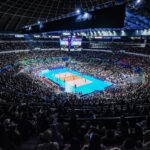
- Cool sweep: How Creamline’s winning formula led to a 7th PVL crown
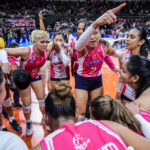
- Pampanga Dragons celebrate 25th anniversary of MBA championship
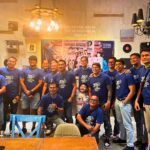
- NBA app launches personalization features, live game experience
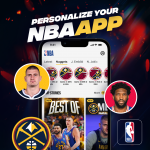
- Dante Silverio celebrates 86th birthday in style
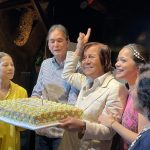
The present breed
It’s not surprising therefore to see the franchise use NSD not just a tagline but even as a banner title, complete with hashtag. While the team remains the most popular in the league, the personalities look very different. Jaworski, back in the mid- to late-80’s, had a plethora of physical, rugged and non-athletic players like Rudy Distrito, Dante Gonzalgo, Leo Isaac, Chito and Joey Loyzaga, Romy Mamaril and Dondon Ampalayo and a bench mob that wouldn’t probably make it to the roster of other teams – Tano Salazar, Dennis Carbonilla, Ed Ducut, Rolly Buhay, Mike Advani, among others. These were notable blue-collar workhorses who weren’t major superstars if not for the popularity they gained by playing for Ginebra.
Today, the franchise has assembled what may perhaps be the most athletically-gifted team in the history of the PBA. Guys like Malonzo, Grey, Aguilar, Pringle, Thompson, Brownlee – guys who can jump off the roof and run like thoroughbreds would never be associated with the term “underdog.” Yet, despite the foreign flavor and the non-underdog association, Ginebra remains just as popular.
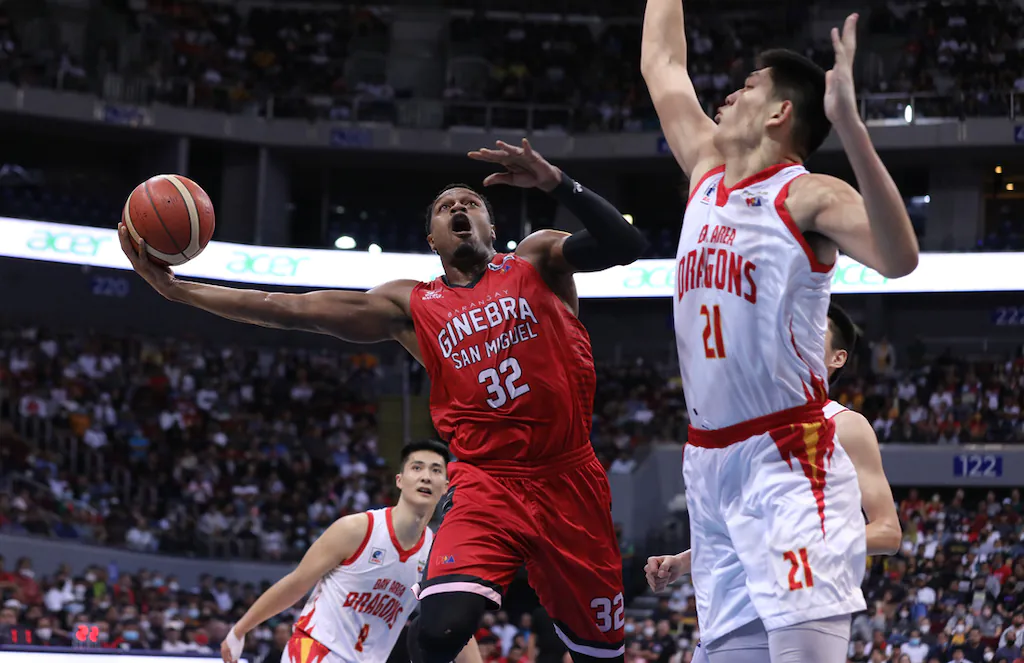
Restless anticipation
The first there quarters were all Bay Area. Fumbles, turnovers, questionable decisions – all these led to several fans grumbling and ranting on certain Ginebra players. Even Brownlee’s uncharacteristic free throw misses and bricks from three-point territory turned what could have been a raucous cheer to a collective gasp of sighs as the team just couldn’t get past the 7-point margin differential. One could also feel the restlessness gnawing at the minds of the more than 15,000 fans who braved the inclement weather to watch live.
When Bay Area coach Brian Goorjian would be flashed on the jumbotron complaining, fans would hoot at him, begging the refs to call a technical on the fiery coach. A technical foul was assessed on one of Bay Area’s assistant coaches, and you sensed that any call favoring the Kings would take them a step closer above the hump. It was a struggle – and while the calls seemed to favor Ginebra, the faithful didn’t mind.
After an Andrew Nicholson slam at the 6:17 mark that gave the Dragons a 75-66 lead, Brownlee went on a tear, and practically single-handedly brought the Kings back from the grave. A jump shot, two of three free throws, a defensive board, a steal and two more free throws, cut the lead to 3, 75-72, with 5:21 left. Kobey Lam though hit four straight to give the Dragons what seemed like a safe 7-point cushion, 79-72, at the 4:19 mark.
And then, the never-say-die spirit kicked in. A two-point shot by Brownlee, a trey by Tenorio, two key defensive boards from Thompson, and another jumper from Brownlee knotted the count at 79-all, with 2:47 left in the game. It was all Ginebra from there as Thompson energized the crowd with his phenomenal rebounds and Brownlee with his steady offensive plays. All these, plus Ginebra’s fine defensive display in the endgame, whipped up a fan frenzy whose collective energies were bottled up for the first 42 minutes of the game.
There were several times the Ginebra chant reverberated through the arena but none was more defeaning than after Malonzo’s trey that gave Ginebra an 84-79 lead with 50 seconds left. Soon enough, the coliseum DJ started playing OPM hits “Pinoy Ako” by Orange and Lemons and “Noypi” by Bamboo, further juicing up the crowd. Thereafter, the crowd unleashed The Wave that circled around at least six times during a timeout.
For the Ginebra players, you sensed the brimming excitement. Bench players were seen jumping continuously to burn the contained energy. On the other side, a forlorn Bay Area bench saw the impending gloom, with the sight of an injured Nicholson at the end of the bench making things worse.
It may have been another day at the office for the Kings. The win gave them a 2-1 lead, which is huge considering how these two teams seem capable of beating one another on any given day.
But for fans, including the writer’s female companion who saw a live PBA game for the first time (scratch that off her bucket list), the night was special. Why not? It was another Ginebra display of never-say-die that will forever be remembered by millions of fans and etched in history books to be relived over and over again.
